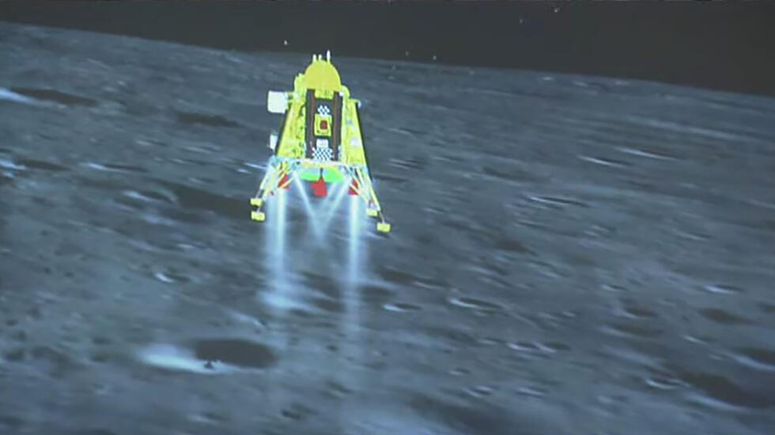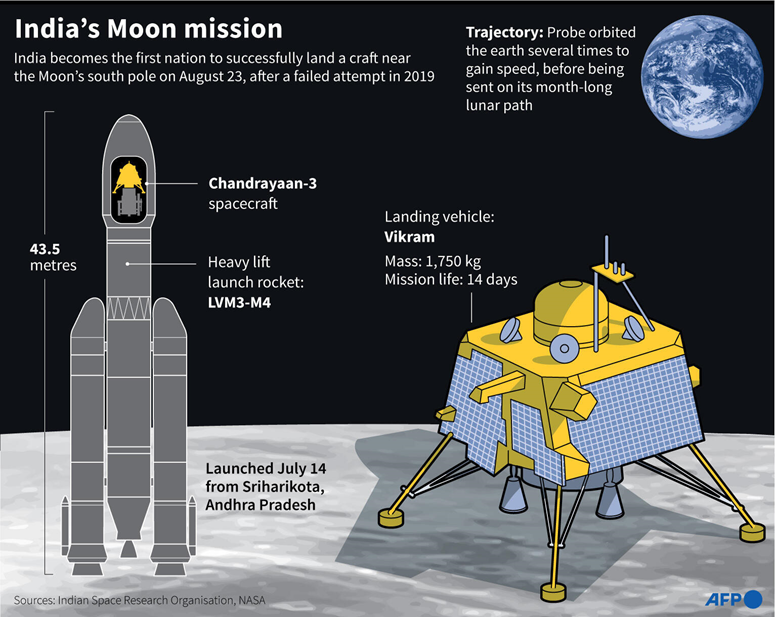The Indian probe Pragyan begins its mission to explore the moon

The probe, called "Pragian", includes two devices for conducting experiments related to chemical elements and compounds.
After the success of the Indian probe Pragyan in its mission and its safe landing on the surface of the moon, the spacecraft began a journey to explore the surface of the south pole of the moon and conduct the required experiments. The probe is expected to remain operational for two weeks.
The head of the Indian Space Agency said that the Chandrayaan-3 mission probe today, Thursday (August 24), left the spacecraft to start the journey of exploring the lunar south pole surface and conducting experiments, and is ready to take on new challenges.

And the Indian spacecraft landed yesterday, Wednesday, in the unexplored south pole of the moon, becoming the first country to achieve such an achievement, just days after the failure of the Russian Luna-25 spacecraft in a similar mission.
The spacecraft's soft landing, after a failed attempt in 2019, sparked jubilation and widespread celebrations in the world's most populous country. The media hailed the historic landing as India's greatest scientific achievement.
S said. Sumanat, head of the Indian Space Research Organization, said the spacecraft and probe are in good condition and "both are working efficiently", but the experiments have yet to begin. "All activities will take place on time. All systems are in normal condition," the space research organization wrote on the X platform, formerly known as Twitter. "Probe navigation operations have begun."

The probe, called "Pragian", includes two devices for conducting experiments related to chemical elements and compounds, and it is also equipped with the ability to automatically plan a path for future exploration operations. The word Chandrayaan means "moon chariot" in Hindi and Sanskrit.
The probe is expected to operate for two weeks, or a lunar day, which is the time period its solar-powered instruments are designed to operate.
Sumanat said that there are "many problems" on the lunar surface that the Space Research Organization will deal with for the first time, especially lunar dust and temperatures that may affect the moving parts of the probe.
He added to the Indian channel CNN News 18 that the dust “can reach the moving parts and disable them... and the engines may not work,” saying that lunar dust is different from what is found on the surface of the Earth, and it can adhere to parts of the probe in the absence of air. On the moon, which may affect its work.
Source: websites

